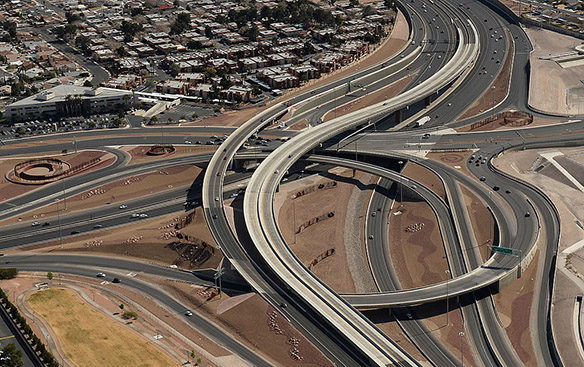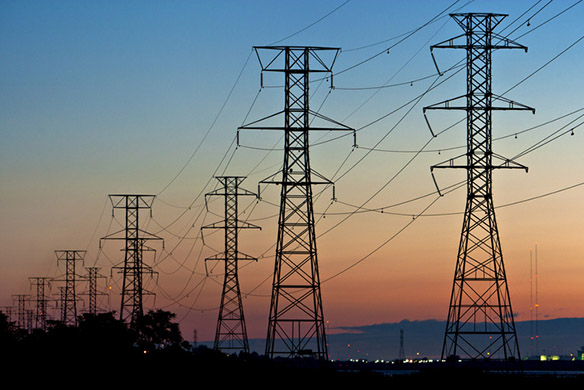 |
| If you’re having trouble reading this, click here. |
 |
| INPUT |
 |
|
|
 |
| Top Takes on Manufacturing, Politics and Policy |
 |
By Rachel Hostyk – May 1, 2019 – SHARE


|
 |
 |
|
|
Top Headlines:
|
|
Employee Compensation Rises Somewhat |
 |
 |
American workers saw their pay and benefits increase 0.7 percent in the first quarter, reports the AP. More:
- “The data, released Tuesday by the Labor Department, suggests that growth in workers’ compensation has stalled in recent months. In the first quarter, wages and benefits increased 2.8% compared with a year earlier.”
- “That’s down slightly from a 2.9% annual gain in the final quarter of 2018. Still, workers’ compensation has picked up slowly. Five years ago, quarterly gains were closer to 0.4%.”
- “The job market is very tight, with the unemployment rate at 3.8%, near a 50-year low, and there are more open jobs than unemployed workers. That has pushed up wages over time, though the gains aren’t as healthy as they were the last time the jobless rate was this low.”
Meanwhile, a new Gallup poll finds that Americans haven’t been this confident in their personal finances since 2002. More from The Hill:
- “A Gallup poll released Tuesday found that 56 percent of respondents felt positively about their finances, with 12 percent rating their personal financial holdings as ‘excellent’ and 44 percent rating them as ‘good.’”
- “That overall confidence score is 10 points higher than in 2015, according to a Gallup poll taken at the time.”
- “Of those surveyed, 57 percent said that their financial outlook was improving year-to-year, an uptick of 10 points over a Gallup survey taken in 2016, according to a press release. That percentage is also the highest registered in Gallup surveys since 2002.”
|
|
 |
| This publication is a first look at breaking news, not the last word on anything. For the Official NAM Position on any given policy, please contact the staff leadership.
|
 |
|
$2 Trillion for Infrastructure? |
 |
 |
President Trump met with House Democrats yesterday to discuss infrastructure spending. The results? An optimistic dollar figure ($2 trillion), but no word yet on where the money will come from. The Wall Street Journal (subscription) has more:
- “‘I like the number you’ve been using, Nancy,’ Mr. Trump told House Speaker Nancy Pelosi (D., Calif.), according to a Democratic aide. ‘Two trillion.’”
- “In unusually positive comments about negotiations with the president, Mrs. Pelosi and Senate Minority Leader Chuck Schumer (D., N.Y.) said that the meeting was productive, and that they had agreed to return in three weeks to hear Mr. Trump’s ideas about how to pay for an infrastructure bill.”
- “‘There was goodwill in this meeting, and that was different than some of the other meetings that we’ve had,’ Mr. Schumer said.”
- “Mrs. Pelosi said the two sides had ‘come to one agreement: that the agreement would be big and bold.’”
- “Republican lawmakers—who control the Senate—are unlikely to support a $2 trillion infrastructure bill. They have warned that a major new federal infrastructure program would increase the federal deficit and deepen local governments’ reliance on the federal government.”
In addition, Senate Majority Leader Mitch McConnell has said that renegotiating the 2017 tax cuts to pay for infrastructure would be a “nonstarter.”
The NAM’s infrastructure blueprint, “Building to Win,” contains many commonsense funding measures that would appeal to both parties, and which the NAM promotes to Congress and the administration. To read its recommendations, go here.
Speaking of infrastructure . . . |
|
Possible Cyberattack on Western Electric Grid |
 |
 |
Terrifying, if true: E&E News considers whether a “cryptic report” from the Department of Energy refers to a cyberattack on electric grid networks in several western states. As of now we don’t know too much, but an attack that disrupted electricity flows would be unprecedented—if it was an attack. More on this “cyber event,” as the DOE refers to it:
- “The March 5 incident lasted from 9 a.m. until nearly 7 p.m. but didn’t lead to a power outage, based on a brief summary of the electric disturbance report filed by the victim utility.”
- “If remote hackers interfered with grid networks in California, Utah and Wyoming, as the DOE filing suggests, the event would be unprecedented. A cyberattack is not known to have ever disrupted the flow of electricity anywhere in the United States, though Russian hackers briefly cut off power to parts of Ukraine in 2015 and again in 2016.”
- “DOE uses a broad definition of ‘cyber event,’ describing it as any disruption to an electrical system or grid communication network ‘caused by unauthorized access’ to hardware, software or data. That leaves open the possibility that a utility employee or trespasser, rather than a remote hacker, triggered the March 5 event.”
The DOE did not comment for this story, nor did several possible victims of the “cyber event.”
Among its many infrastructure goals, the NAM is pushing for the modernization of the electric grid, which must include increased cybersecurity protections in this dangerous age. |
|
Appalachian Renewal |
 |
 |
New ethane storage facilities are poised to revitalize the economy of Appalachia, according to a new report from the AP. More on these developments:
- “Experts say the availability of storage facilities will help the tristate region of eastern Ohio, southwestern Pennsylvania and northern West Virginia attract petrochemical plants that turn ethane into raw plastic and, the hope is, attract manufacturing companies to make products ubiquitous to modern life.”
- “Energy Storage Ventures is awaiting approval of state permits to construct an underground facility to store ethane and other natural gas liquids, said David Hooker, the Colorado-based company’s president.”
- “Meanwhile, Appalachia Development Group in Charleston, West Virginia, wants to build a much larger storage facility somewhere in the tristate region. Company President and CEO Steven Hedrick said the creation of a petrochemical and plastics industry could lead to billions of dollars in investment and tens of thousands of jobs in the coming years.”
- “Industry experts say there is enough potential ethane production in Appalachia’s Utica and Marcellus shale fields to supply four or five petrochemical plants in the region. They also say underground storage is vital to providing an uninterrupted supply to those plants.”
Meanwhile, one facility is already in the works:
- “The first signs of the emergent ethane petrochemical industry are clearly visible northwest of Pittsburgh, near Monaca, Pennsylvania, where thousands of workers are building an ethane “cracker” plant for Royal Dutch Shell capable of producing 1.6 million tons (1.45 million metric tons) of raw plastic annually. The plant’s ethane supply will come from Shell’s own pipeline system connected to processing facilities in Ohio and Pennsylvania, negating the need for bulk storage.”
The NAM has pushed for the development of ethane storage facilities in this region, urging the Department of Energy to facilitate it. In an executive order last month, President Trump called on federal agencies to produce reports on economic opportunities in Appalachia, including the growth potential of the petrochemical industry.
As NAM President and CEO Jay Timmons wrote in 2017 to Energy Secretary Rick Perry:
- “The U.S. is now the world’s largest natural gas producer. We have truly become energy dominant, and the addition of a storage hub for ethane and other NGLs [natural gas liquids] in the Appalachian region would add to this dominance by attracting manufacturers and their deep supply chains.”
- “The American Chemistry Council estimates that an Appalachian Storage Hub could generate over 100,000 jobs and $36 billion in capital investment from the petrochemical industry. Since many other manufacturing sectors also rely on NGLs, these impressive numbers may turn out to be conservative.”
|
 |
| Industry Headlines |
 |
|
|
 |
| NAM News |
 |
- The Washington Times quotes NAM President and CEO Jay Timmons on the potential infrastructure bill.
- The Wall Street Journal (subscription) quotes NAM Vice President of International Economic Affairs Linda Dempsey on the prospects of the U.S.–China trade talks, as does the AP.
- Read about how the lead battery industry employs a “circular economy” in order to be more sustainable.
|
 |
|
If you’re part of an NAM member company and not yet subscribed, email us. If you’re not an NAM member, become a member today.
|
|
|
|
 |
|
|
|
 |
|
|